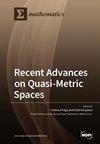推导相互依存标准的一致模糊优先级稳态行为的通用方法
IF 2.2
3区 数学
Q1 MATHEMATICS
引用次数: 0
摘要
在各个领域的复杂决策中,相互依存的标准发挥着至关重要的作用。传统方法往往难以对具有复杂依赖关系的标准进行评估和优先排序。本文介绍了一种在模糊环境中整合了分析网络过程(ANP)、决策试验和评估实验室(DEMATEL)以及一致模糊分析层次过程(CFAHP)的通用方法。应用 Drazin 逆技术得出模糊总优先级矩阵,并对行和进行归一化处理,从而得到稳态模糊优先级。信息系统(IS)行业中的一个数字实例展示了该方法在现实世界中的应用。与过去的模糊分析网络过程(FANP)方法相比,所提出的方法得出了更窄的模糊分布,最大限度地减少了客观不确定性。总优先级相互依存图为复杂的技术和可用性标准关系提供了洞察力。比较分析突出了创新之处,包括总优先级矩阵的非迭代收敛性和理解标准间相互依赖关系的能力。FANP 的网络结构与模糊 DEMATEL 的影响分析相结合,超越了两种方法单独使用的能力,标志着方法论上的重大进步。通过解决参数选择和数学复杂性等难题,这项研究为多属性决策(MADM)的未来研究和应用提供了新的视角。本文章由计算机程序翻译,如有差异,请以英文原文为准。
A Generalized Method for Deriving Steady-State Behavior of Consistent Fuzzy Priority for Interdependent Criteria
Interdependent criteria play a crucial role in complex decision-making across various domains. Traditional methods often struggle to evaluate and prioritize criteria with intricate dependencies. This paper introduces a generalized method integrating the analytic network process (ANP), the decision-making trial and evaluation laboratory (DEMATEL), and the consistent fuzzy analytic hierarchy process (CFAHP) in a fuzzy environment. The Drazin inverse technique is applied to derive a fuzzy total priority matrix, and we normalize the row sum to achieve the steady-state fuzzy priorities. A numerical example in the information systems (IS) industry demonstrates the approach’s real-world applications. The proposed method derives narrower fuzzy spreads compared to the past fuzzy analytic network process (FANP) approaches, minimizing objective uncertainty. Total priority interdependent maps provide insights into complex technical and usability criteria relationships. Comparative analysis highlights innovations, including non-iterative convergence of the total priority matrix and the ability to understand interdependencies between criteria. The integration of the FANP’s network structure with the fuzzy DEMATEL’s influence analysis transcends the capabilities of either method in isolation, marking a significant methodological advancement. By addressing challenges such as parameter selection and mathematical complexity, this research offers new perspectives for future research and application in multi-attribute decision-making (MADM).
求助全文
通过发布文献求助,成功后即可免费获取论文全文。
去求助
来源期刊

Mathematics
Mathematics-General Mathematics
CiteScore
4.00
自引率
16.70%
发文量
4032
审稿时长
21.9 days
期刊介绍:
Mathematics (ISSN 2227-7390) is an international, open access journal which provides an advanced forum for studies related to mathematical sciences. It devotes exclusively to the publication of high-quality reviews, regular research papers and short communications in all areas of pure and applied mathematics. Mathematics also publishes timely and thorough survey articles on current trends, new theoretical techniques, novel ideas and new mathematical tools in different branches of mathematics.
 求助内容:
求助内容: 应助结果提醒方式:
应助结果提醒方式:


